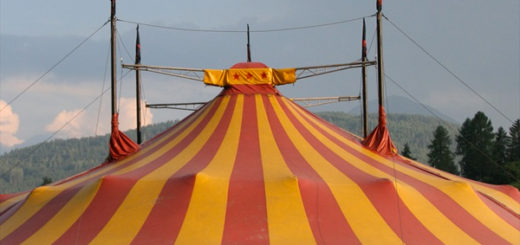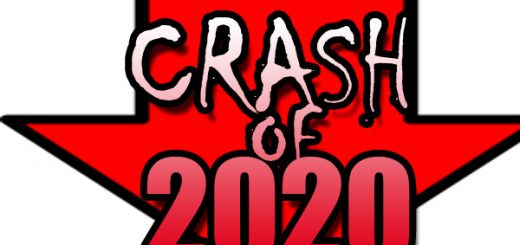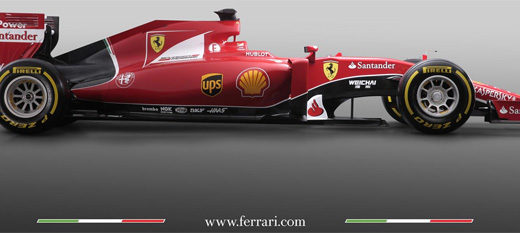NASCAR and F1 Have More In Common Than They Would Like
Formula 1 (aka F1, Formula One, the house that Bernie Built) is perhaps the highest of the high end of auto racing. Teams have no limit to the amounts of money they can spend, the people they can throw at a job, the technology they can use. Outside of the somewhat limited formula of the car itself, teams use the highest of high tech to get the job done, resulting is super light weight race cars, insane g-forces, and monstrous speeds on twisting tracks.
NASCAR is the complete other end of the scale. Basic tube frame chassis, the appearance of a stock production car, 15 inch wheels, pushrod V8s (finally with fuel injection, only 30 years after everyone else go there), truck arm suspensions, and a yee haw good old boy mentality. Go far, turn left, rubbing is racing, and all that noise.
Yet, these two incredibly diverse forms of autoracing are tied together by a simple, undeniable problem that is haunting them and many other forms of auto racing today:
Fewer and fewer people care.
Auto Racing is, for the most part, turning into an old man’s sport. Much like Horse racing in the past, the younger audience for the sport has nearly completely dried up, and what is left is an older demographic who still loves the noise, still loves the action, still loves the racing. Horse racing has survived mostly as a niche sport now, with many race tracks turned into tract housing, others turned into slot machine casinos that just happen to have horse racing. Auto racing has seems some bright spots for younger people such as drifting and some forms of road racing, and Formula E does seem to be getting a bit of attention by bringing the racing to city streets. Those bright spots are fairly rare all considered, and that is hurting the overall product.
In the case of NASCAR, one of their biggest problems may be taking care of itself. They have gone a number of years (seemingly decades) with many of the same drivers at or near the front of the races. Dale Earnhardt jr, Tony Stewart, Carl Edwards, and Jeff Gordon are four big examples. Three of them have retired in the last 2 years, and Earnhardt is on his last laps after a series of head injuries seem to have convinced him to hang up the helmet before he does himself some serious damage. That has given the sport a chance to bring in some new drivers, younger drivers, that perhaps touch slightly different demographics – even having a (NASCAR gods forbid) a black driver in Darrell Wallace jr. However, with the same set of cookie cutter tracks and cookie cutter cars, it’s hard for NASCAR to overcome their “stuck in the 80s” image, not helped in the slightest by their straight out of the 80s announcing teams.
Formula One and NASCAR have another problem in common: The costs of racing. Formula one teams have budgets that would make most people cry, with rumors that Ferrari spends just this side of half a billion dollars a year to race. In NASCAR, the numbers aren’t quite that mind numbing, but still are getting very out of hand. A top line full season sponsor use to be 3 to 5 million, now it costs half a million a week to keep a top level team running, so somewhere north of 20 million when it’s all done. That’s way beyond the spending power of most companies, which means there is a huge fight for sponsors. But with a diminishing viewing audience, diminishing race attendance, and a diminishing media profile, those sponsors are hard to come by. Even top profile names like Danica Patrick find themselves with plenty of open real estate and open dates in their sponsorship lineup.
The solution for both series are the same, and at least in Formula One, there appears to be a move for chance. New Owners of Formula One, a company called Liberty Media, are pushing hard to clean up some of the mess left by previous series boss Bernie Ecclestone. They have moved fairly quickly to solidify contracts with some of the races on the calendar, at rates that seem a little more reasonable, and at the same time have moved to bring the series back to it’s roots in Europe and away from some of the oil money countries that have been buying F1 races for their profile, and not because of a fan base. Ecclestone chased every last penny to the ends of the earth and left plenty of it scorched behind him. Expensive “lemon” tracks in India and Korea are great examples of taking someone’s money for something that wasn’t a good idea, all the while sacrificing traditional race dates in Europe and pricing the fees out of the range of most others. It’s the reason that F1 races in Azerbaijan but has no longer in Estoril, Imola, or Zandvoort.
NASCAR also chased the money but for slightly different reasons. Most of the circuits used in the NASCAR series are owned by a small number of companies, the biggest being International Speedway Corporation, who’s ownership overlaps that of NASCAR. They spend the 70s, 80s, and early 90s during the CASCAR boom period opening new tracks, adding massive amounts of seats to existing tracks, and run about half of the races in a NASCAR cup season. The bad part is that for the sake of money and income, most of the tracks that were built were 1.5 mile D shaped ovals, popular with the company because the curved part of the D with the start line and pit road in front allow them to sell a ton of “good” grandstand seats and hospitality suites. What they didn’t grasp is that racing on those tracks is often dull, and with many tracks being so alike it’s hard for fans to get excited about it. So while many of these tracks made money up front, they are now facing the problem of excess seating capacity, lowered demand, and the embarrassment of tens of thousands of empty seats playing on national television.
It took NASCAR and ISC a good 10 years to even slightly admit they had an issue, and they have started to renovate tracks to have “wider” seats to make fans comfortable. But what is more important is that they have a whole lot less of them. Daytona Speedway, the crown jewel of NASCAR, peaked out at 160,000 seats in the go-go 90s peak, and with the recent renovations is down to 101,000. That combined with less infield space for camping and such means that the recent events in Daytona have somewhere around 80,000 to 100,000 less fans in attendance. Atlanta, Talladega, Michgan, and many other tracks are ripping out seats and tearing down grandstands at a quick pace, with something higher than a quarter million seats removed. Considering most tracks have two events a year, that represents half a million less tickets, and yet demand is still not soaking it all up.
At some point, NASCAR may realize that part of their problem is that they moved away from their roots, from what made them a unique autosports event, and instead have become speed fast food. Unique tracks like Rockingham and North WIlksboro were lost and cookie cutter tracks were added, all in the quest for the bottom line. The fans lost out, and over time, what made the sport special for many has been lost. Formula One appears to be starting to address the issue with a return of a couple of European races and the dropping of the Malaysian GP race from the calendar. Can NASCAR wake up and find it’s roots before they completely die off?









